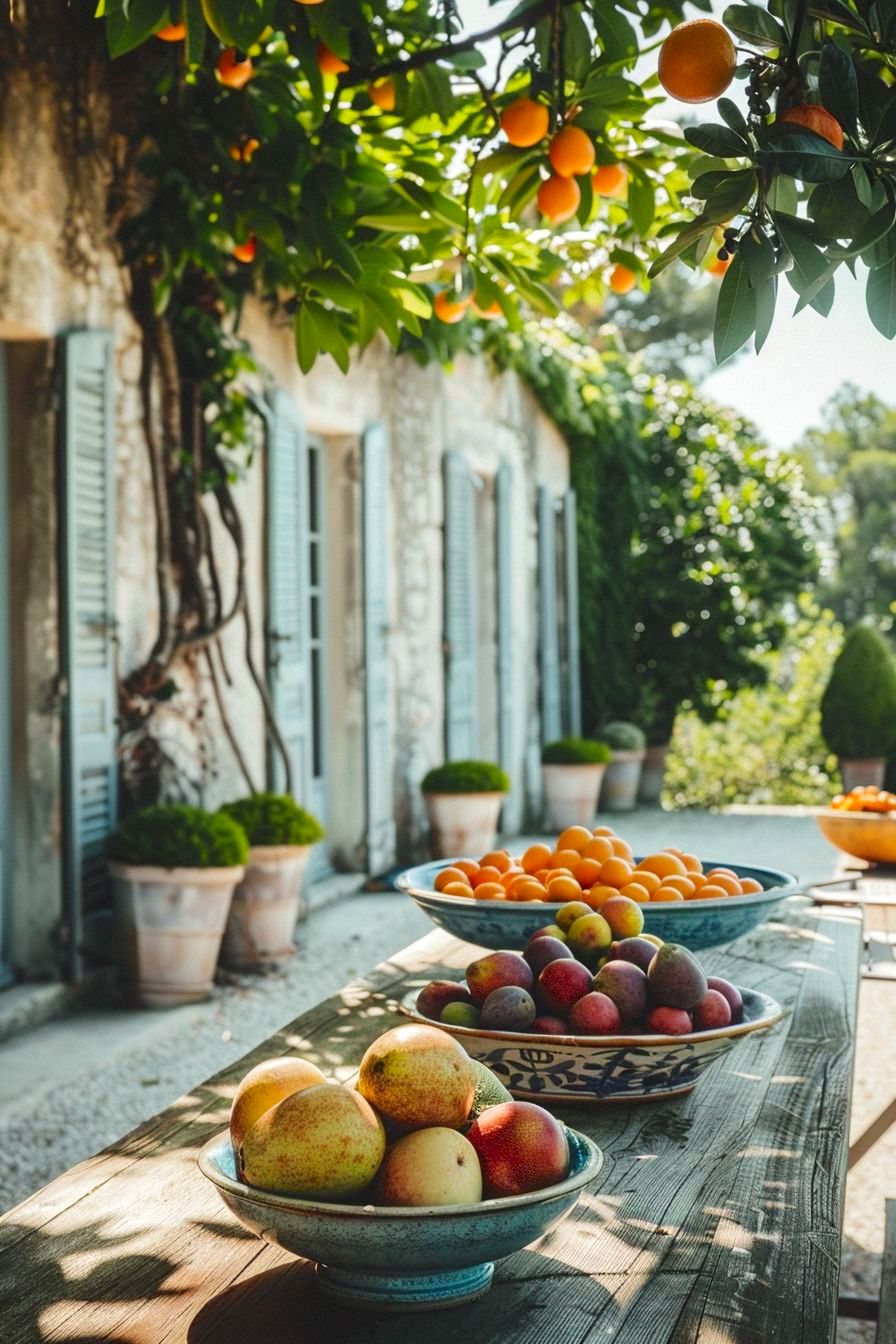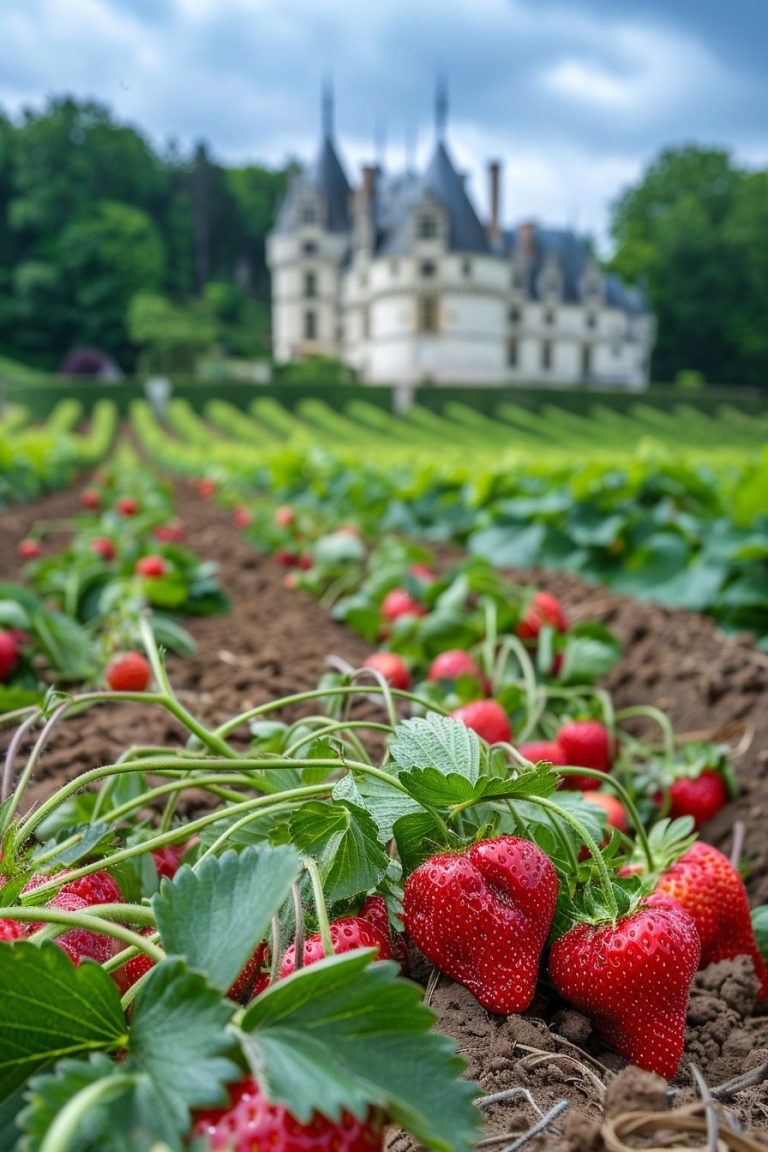29 Types of Fruits Enjoyed in France
We may earn a commission through all links on this website. As an Amazon Associate, we earn from qualifying purchases.Today, we’re swapping our usual savory berets for a touch of sweet – a deep dive into the fruits of France and their succulent secrets.
France, the birthplace of champagne, the Eiffel Tower, and chic fashion, also boasts an array of delectable fruits that make their way into numerous iconic dishes. These fruits thrive under the French sun and are just as varied and exquisite as the diverse regions they grow in, from the sun-kissed vineyards of Provence to the lush apple orchards of Normandy.
In French cuisine, fruits play an irreplaceable role. They burst with flavor in rustic tarts, simmer sweetly in robust wines, and lend a fresh note to rich patés. We will explore the French fruit cart, tasting our way through the fruits that are most popular and cherished in France. Prepare to discover these fruity stars, learn about their cultural significance, and how they’re used in traditional French recipes.
Whether you’re a fan of tart raspberries, crisp apples, or perhaps something more exotic, like the Mirabelle plum, join us on this flavor journey across the French countryside. Let’s explore how to incorporate these fruits into your cooking repertoire and elevate your dishes, bringing joie de vivre to your table!
So, mesdames, tie on your apron, ready your palette, and let’s traverse the fruitful landscapes of France. You’re in for a treat! À bientôt!
Berries
Berries are small fruits with thin skin that you can bite easily. Berries are juicy, sweet fruits that perish quickly.
Blueberries
Native to the mountainous regions of France, wild blueberries, or “myrtilles,” are a summer delicacy often featured in sweet tarts and jams across the country.
Strawberries
Gariguette strawberries, loved for their unique, sweet and tangy flavor, are a springtime staple in France, gracing markets and enhancing a range of pastries, from tarte aux fraises to fresh strawberry mousses.
Raspberries
French raspberries, particularly those grown in the Ile-de-France region, are celebrated for their vibrant flavor, lending their tart sweetness to French patisseries and liquors like Chambord.
Cranberries
While not as prevalent as other berries, cranberries, known as “canneberges” in France, are grown in the regions of Brittany and Normandy, and often find their place in holiday dishes and hearty compotes.
Blackberries
Blackberries, or “mûres,” are widely foraged in France’s wild hedgerows during late summer and are the star ingredient in traditional desserts like clafoutis and confiture de mûres (blackberry jam).
Blackcurrants
Renowned for their tart flavor, blackcurrants are quintessential to French cuisine, primarily in the form of Crème de Cassis, a liqueur from Burgundy used to make the iconic Kir cocktail.
Grapes
From the vineyards of Bordeaux to those of Champagne and Burgundy, France’s grapes are legendary, crafting some of the world’s finest wines, while also being enjoyed fresh from the vine for their sweet, juicy flavor.
Pits
Pits are a French fruit group consisting of pitted fruits with a thin skin covering a soft fruit. A single hard stone is at the center and contains the seed.
Apricot
The sun-drenched fields of the Rhône Valley yield some of France’s most delicious apricots, or “abricots,” which star in delightful preserves and the classic dessert, tarte aux abricots.
Avocado
Though not traditionally grown in France, avocados, or “avocats,” have found their place in modern French cuisine, appearing in dishes from fresh salads to trendy, health-conscious meals.
Peach
Peaches, especially those from the Midi-Pyrénées region, have a special place in French cuisine, featuring in sumptuous dishes such as Pêche Melba, a dessert invented by the French chef Auguste Escoffier.
Plums
Mirabelle plums, the little yellow gems from Lorraine, are a beloved French fruit, used to craft flavorful tarts, jams, and the famous Mirabelle eau-de-vie.
Cherries
Cherries, particularly the sour Morello variety, are highly cherished in France and are key to the classic French dessert clafoutis, hailing from the Limousin region.
Dates
While dates, or “dattes,” aren’t grown in France, they’re a significant part of French North African cuisine, celebrated in festive dishes and rich, sweet pastries.
Olives
Olives, a symbol of Mediterranean France, are harvested from the sun-soaked groves of Provence and are integral to French cuisine, from tapenades to the classic Niçoise salad.
Core
Core fruits have small, central seeds surrounded by a thick layer of flesh.
Apples
The cool, verdant region of Normandy, France, is famous for its apples, producing not only crisp, flavorful varieties for eating, but also special cider apples used to create Calvados, a local apple brandy.
Pears
Pears, particularly the succulent Doyenné du Comice variety, thrive in France’s Loire Valley, where they are celebrated both in fresh fruit dishes and in exquisite desserts like the classic tarte aux poires.
Quince
Quince, or “coing,” is a traditional French fruit typically transformed into a sweet, spicy jelly known as pâte de coing, a staple of French cheese platters, especially during the cooler months.
Citrus
Citrus fruits are tangy and acidic, and at times sour. They have a thick outer skin and a secondary membrane which separates the flesh into smaller sections.
Orange
Oranges, especially the bitter variety, have a significant place in French cuisine, from the Côte d’Azur’s zesty marmalades to the delectable duck à l’orange, a classic of French gastronomy.
Lemon
The sunny Mediterranean town of Menton is famed for its lemons, hosting an annual Lemon Festival and producing vibrant lemons that star in everything from tarts to limoncello.
Lime
Limes, while not as widely grown as other citrus in France, are nonetheless embraced in French cuisine for their tangy zest, accentuating both savory dishes and desserts like the refreshing tarte au citron vert (lime tart).
Clementine
Corsican clementines, with their delicate, sweet flavor, are a French winter favorite, enjoyed fresh or used in delectable desserts and sweet, aromatic marmalades.
Grapefruit
Pamplemousse, the French term for grapefruit, while not natively grown, features in many French recipes, from the traditional breakfast table to sophisticated salads and desserts, prized for its bittersweet flavor.
Melons
These large French fruits have lots of seeds and a juicy interior.
Watermelon
In the warm summer months, watermelons, or “pastèques,” become a refreshing staple in the French diet, often served chilled in fruit salads or blended into refreshing drinks.
Tropical
Tropical fruits grow in warm climates and originate in exotic places. Nevertheless, some of them are now grown in France.
Bananas
Although bananas aren’t grown on mainland France, the French Caribbean islands of Guadeloupe and Martinique are known for their robust banana plantations, contributing to a variety of dishes from savory to sweet.
Mangos
Similarly to bananas, mangos are not a native fruit of mainland France, but they’re abundantly grown in the French overseas territories, particularly in Reunion Island, and feature prominently in Creole cuisine.
Pineapples
The French region of Brittany is famed for its exotic pineapple greenhouses, while the tropical fruit also thrives in the French overseas territories, lending a touch of sweetness to many island dishes.
Kiwi
Surprisingly, France is one of the leading European producers of kiwi fruit, with the Adour region’s unique climate providing ideal conditions for these vibrant, tangy fruits.
Pomegranates
While not widely grown in France, pomegranates, or “grenades,” have a significant presence in French North African cuisine, celebrated for their jewel-like seeds that provide a sweet-tart burst in salads and desserts.
Figs
Figs, especially those from the sunny region of Provence, are cherished French fruit, starring in classic dishes like fig tarts, preserves, and the traditional French holiday dessert, Bûche de Noël.


